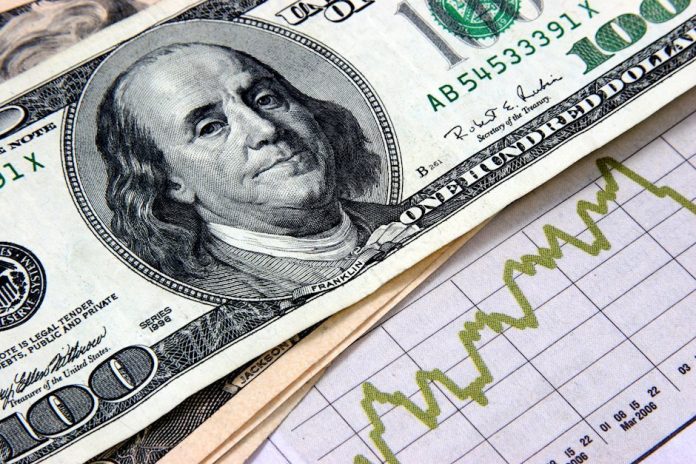Introduction
The US Dollar Index (DXY) has been a critical indicator of the dollar’s strength against a basket of major currencies. As of August 2024, the index has managed to remain above the critical 103.00 level, signaling a potential trend reversal. This development is significant for traders, investors, and policymakers who monitor the index closely for signs of economic stability or potential market shifts. In this article, we will explore the factors contributing to the DXY’s performance, the implications of its stability, and the expectations for a trend reversal in the near future.
The Significance Of The 103.00 Level
The 103.00 level on the US Dollar Index has long been regarded as a crucial threshold. When the DXY trades above this level, it typically indicates a strong dollar, reflecting investor confidence in the US economy. Conversely, a drop below this level often signals weakness, with potential ramifications for global trade, commodity prices, and international investments.
In recent months, the DXY’s ability to sustain itself above 103.00 has been viewed as a sign of resilience, particularly in the face of economic uncertainties and geopolitical tensions. The index’s performance has been influenced by various factors, including inflation rates, interest rate expectations, and the overall economic outlook.
Factors Contributing To DXY Stability
Several key factors have contributed to the US Dollar Index’s stability above 103.00:
Inflation Control Measures: The Federal Reserve’s aggressive stance on inflation has played a significant role in bolstering the dollar. By raising interest rates and signaling further tightening, the Fed has made the dollar more attractive to investors seeking higher returns.
Global Economic Uncertainty: Ongoing geopolitical tensions, particularly in Europe and Asia, have driven investors toward safe-haven assets like the US dollar. This flight to safety has helped maintain the DXY’s strength.
Economic Data: Positive economic data from the US, including lower-than-expected unemployment rates and robust GDP growth, have reinforced confidence in the dollar. These indicators suggest that the US economy remains strong, further supporting the DXY.
Divergent Monetary Policies: The US dollar has also benefited from the divergent monetary policies of other central banks. While the Federal Reserve has been tightening, other central banks, particularly in Japan and Europe, have maintained more accommodative policies, weakening their respective currencies against the dollar.
Expectations Of A Trend Reversal
While the DXY’s stability above 103.00 is a positive sign, market analysts and economists are increasingly expecting a trend reversal. Several factors contribute to this outlook:
Interest Rate Peaks: The Federal Reserve is nearing the end of its rate-hiking cycle. As interest rates peak, the dollar’s appeal may diminish, leading to potential weakness in the DXY.
Recession Fears: Growing concerns about a potential recession in the US could weigh on the dollar. If economic growth slows significantly, the Fed may be forced to pivot to a more dovish stance, which could trigger a decline in the DXY.
Technical Indicators: Technical analysis suggests that the DXY is approaching overbought levels. Historical patterns indicate that such conditions often precede a reversal, where the index could move lower.
Global Economic Recovery: As global economies recover from the impacts of the COVID-19 pandemic and other disruptions, currencies such as the euro and yen may regain strength, challenging the dollar’s dominance and contributing to a potential DXY decline.
Implications For Traders And Investors
For traders and investors, the potential trend reversal in the DXY presents both opportunities and risks. A weaker dollar could lead to gains in commodities, as they are often priced in dollars, making them cheaper for foreign buyers. This scenario could also benefit emerging markets, where dollar-denominated debt becomes easier to manage with a weaker greenback.
On the other hand, a declining DXY could pose challenges for US-based exporters, as a weaker dollar would make their goods more expensive in foreign markets. Additionally, investors holding dollar-denominated assets might see reduced returns if the dollar weakens.
Strategic Considerations
Given the current outlook, traders and investors should consider several strategies:
Diversification: As the DXY faces potential downward pressure, diversification into other currencies or assets could help mitigate risks. Currencies from economies with stronger growth prospects or higher interest rates may offer attractive alternatives.
Commodity Investments: Commodities like gold, oil, and agricultural products could benefit from a weaker dollar. Investors might consider increasing their exposure to these assets as a hedge against dollar depreciation.
Emerging Market Opportunities: A declining DXY could boost emerging markets, making them more attractive to investors. Countries with strong economic fundamentals and manageable debt levels could offer lucrative investment opportunities.
Monitoring Central Bank Actions: Staying informed about central bank policies, particularly the Federal Reserve’s decisions, will be crucial. Any changes in monetary policy could have immediate and significant impacts on the DXY and related markets.
Conclusion
The US Dollar Index’s ability to maintain its position above 103.00 has been a testament to the dollar’s strength in the face of various economic challenges. However, with expectations of a trend reversal on the horizon, traders and investors must remain vigilant and adaptable. By understanding the factors driving the DXY’s performance and considering strategic adjustments, market participants can navigate the potential shifts in the dollar’s trajectory with greater confidence.
